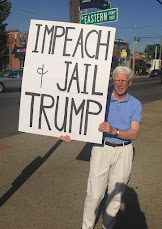I was 8 years old and I still have never been shocked quite like I was on this date 54 years ago when I heard the most terrible and baffling news bulletin:
“A fire abroad the Apollo spacecraft on the launchpad at the Kennedy Space Center has killed the three astronauts chosen to fly the first Apollo mission.”
Gus Grissom, who was from Mitchell, Ind., just 50 miles from our home, was dead. Ed White, the first American to walk in space, was dead. And Roger Chaffee, a rookie astronaut, was dead.
It was like feeling three knives cutting in rapid succession through my young heart. I knew of and had strong impressions of Gus Grissom, because of his local ties, and Ed White, because of his spectacular space walk. And Roger Chaffee’s dying seemed particularly demoralizing as he never made it to space.
And as the death toll was read, the accompanying feeling to the paralyzing devastation was bafflement.
What do they mean “on the launch pad?” Astronauts aren’t in danger on launchpads.
And a fire -- inside the spacecraft? As much as Americans of the ‘60s were always prepared for a tragedy in space, it just wasn’t fathomable that one had occurred several days before the mission was even to begin.
It turned out the Apollo 1 fire wasn’t fathomable to NASA’s best and brightest scientists, engineers and mission planners either. The failures of institutions on Earth, rather then the hazards of space travel, killed three fine people, all of whom left children and widows. Their inconsolably painful deaths resulted from shoddy work by Apollo Command Module contractors rushed by the government’s “go fever” in a race against the Soviets to the moon. And from a pattern at NASA of looking the other way.
Though some safety improvements in the Command Module were made after being insisted on by mission commander Grissom, everyone at the space center knew there still were unacceptable levels of danger in the design specifics and hasty schedule of Apollo. But an epidemic of hopes that the myriad remaining problems with the project would work themselves out quieted each person’s desire to speak up.
We’ve got a moon race to win, after all, and the whole world is going to salute either us or the USSR on the day the finish line is crossed.
Two and one-half years later at Tranquility Base, we crossed it first, but the completely preventable deaths of Gus, Ed and Roger that awful night will always be a blot on our nation’s most glorious accomplishment.
 |
| Ed White's finest moment, performing the first U.S. space walk on Gemini 4 in 1965. "I feel like a million dollars!" he told the world below. |
I wrote a high school term paper on the fire eight years after it occurred. In college, I again examined the catastrophe on the launch pad in a piece on space exploration I wrote in our student newspaper in 1981, on the 20th anniversary of the beginning of human space fight.
For decades, the Apollo 1 fire would not let go of the families of the three deceased crew members.
Betty Grissom, Gus’ widow -- known during her husband’s seven year astronaut service for freely criticizing NASA over its treatment of him and herself -- sued Apollo Command Module contractor North American Rockwell. It was a precedent-setting case establishing the right of families to be compensated for the pain and suffering of astronauts in fatal mishaps involving undue hazards beyond the assumed risk of space travel. She received $350,000 from the aerospace corporation.
Ed White’s widow Patricia White, admired among the space community for her fetching charm and congeniality, never got closure in the courtroom or elsewhere.
Though accounts differ on the cause of her 1983 death, author Lily Koppel wrote in her 2013 book, “Astronaut Wives Club” that Pat White took her own life.
“Most of the wives believed her to be the final victim of the Apollo 1 fire,” Janet Tudal Baltas wrote in a review of Koppel’s book.
Sheryl Chaffee Marshall, daughter of Roger Chaffee and employee at the Kennedy Space Center, told ABC’s Peter Jennings in 1997 she liked to take quiet introspective walks to the launch pad where her father died when she was eight years old.
The treks allowed her to feel closer to him.
Eight years later, the Tampa Bay Times reported that “only recently has Chaffee Marshall come to grips with the death of astronaut Roger Chaffee.”
The walks to the pad were still an occasional ritual in the mid-2000s.
"That's where I can remember my father," she told the Times. "I remember him as living, not as dying there.”
On the 50th anniversary of the fire, Betty Grissom, at age 89, also showed that she had reached a more philosophical outlook on the Apollo 1 disaster. While attending a commemoration at the Kennedy Space Center, she told a reporter her husband’s ultimate sacrifice helped put 12 Americans on the moon in Apollos 11 through 17.
“I’m pretty sure he got to the moon before they did,” Betty Grissom said of her late husband. “Of course he didn’t make it, but in spirit, I think he was already there.”
_______________________
Brian Arbenz lives in Louisville, Ky. He grew up in nearby New Albany, Ind. following space and moon missions closely.
#Apollo1 #GusGrissom #EdwardWhite #RogerChaffee #space #NASA #1967 #SherylChaffeeMarshall #SpaceDisasters



 ).
).



